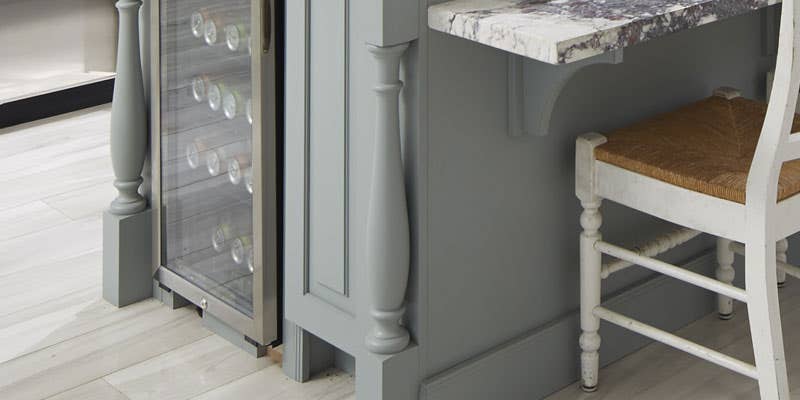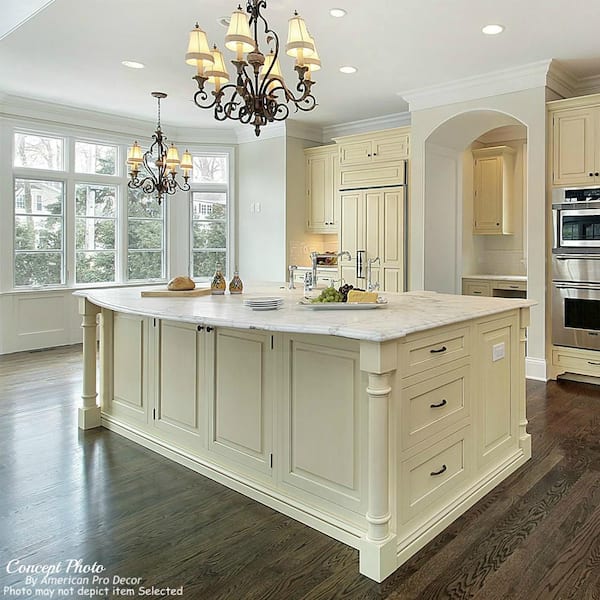Include Beauty and Personality to Your Space with Legs For Kitchen Island Creations
Include Beauty and Personality to Your Space with Legs For Kitchen Island Creations
Blog Article
Important Aspects to Take Into Consideration When Picking Legs For Kitchen Area Island
Picking the appropriate legs for a cooking area island involves a cautious assessment of several variables that can considerably affect both functionality and aesthetic allure. As we explore these aspects, it comes to be clear that each decision can have significant effects for the overall kitchen area experience.
Product Options
When selecting legs for a kitchen area island, recognizing the various material choices is crucial for achieving both aesthetic allure and architectural integrity (Legs For Kitchen Island). The option of product dramatically influences not only the toughness of the island yet also its overall style and performance
Steel legs, usually made from stainless steel or functioned iron, add a contemporary and commercial feel while ensuring durability and stability. These products are immune to use and can sustain significant weight, making them ideal for larger islands.
One more option is engineered materials, like MDF or plywood, which can be extra cost-efficient while still supplying a variety of surfaces. They may not provide the very same degree of stability as strong wood or metal. Legs For Kitchen Island. Products such as acrylic or glass can develop a modern appearance, though they might need extra support to make sure security.
Eventually, the choice of material for kitchen area island legs need to straighten with the wanted capability and the total style of the kitchen area.
Design And Style

When considering design, the shape and coating of the legs are critical. Conical legs can offer a feeling of lightness and elegance, while thicker, extra robust legs can share strength and security. Additionally, the surface-- be it repainted, discolored, or all-natural-- should match the cabinetry and counter top products to develop a unified look.
Additionally, the layout of the legs can also show personal preference. Personalized or attractive legs, such as those including complex carvings or special geometric shapes, can work as prime focus, including character and character to the cooking area. Inevitably, the right option will certainly not just boost functionality yet additionally elevate the aesthetic appeal, making the kitchen area island a standout function of the home.
Elevation Factors To Consider
Choosing the appropriate elevation for kitchen area island legs is vital, as it directly impacts both capability and convenience. The conventional height for a cooking area island commonly ranges from 36 to 42 inches, aligning with usual counter top heights.

It is likewise necessary to account for customers' heights and choices. Customizing the elevation can guarantee a comfy experience for all household participants, making the cooking area island an extra useful and satisfying room.
Weight Support
Making certain adequate weight assistance for cooking area island legs is crucial for both safety and security and functionality. The kitchen area island commonly serves multiple purposes, including cooking, dining, and additional storage, requiring a robust support framework. When selecting legs, it is vital to consider the general weight capacity anchor called for based on the island's intended usage and the products that will certainly be put on it.
The option of product for the legs plays a significant duty in their weight-bearing abilities. Strong timber, steel, and heavy-duty composites typically give superior strength compared to lighter materials. Furthermore, the layout of the legs-- whether they are right, tapered, or have a pedestal kind-- can affect their ability to distribute weight efficiently across the structure.
Additionally, the leg positioning need to be purposefully intended to boost security. Legs placed at the edges or with a bigger base can much better sustain larger lots. Constantly get in touch with the supplier's requirements pertaining to lots restrictions to make certain that the legs can maintain the designated weight without jeopardizing security. In summary, selecting cooking area island legs with ample weight assistance is necessary for producing a functional and secure cooking area.
Installation and Upkeep
Proper installment and maintenance of kitchen island legs are essential for ensuring long life and stability. To start, it is important to adhere to the maker's guidelines during setup. This frequently includes safeguarding the legs to the island base making use of suitable bolts, guaranteeing that the legs are degree and aligned. Using a degree tool can assist prevent wobbling and boost the overall aesthetic allure of the kitchen island.
When mounted, normal maintenance is required to protect the stability and look of the legs - Legs For Kitchen Island. For wood legs, routine cleansing with a wet towel and application of suitable wood polish can avoid wetness damage and preserve their surface. Metal legs may need a gentle cleaning service to eliminate grease and grime, followed by a dry cloth to avoid rust formation
Furthermore, inspect the legs regularly for indicators of wear find more or damage, such as cracks or loosened joints. Tightening screws or screws as needed can likewise prolong the life-span of the legs. By adhering to these installment and maintenance techniques, house owners can guarantee that their cooking area island stays tough and visually appealing for several years to find.
Verdict

Visual comprehensibility is paramount in choosing the design and layout of legs for a kitchen island, as these elements considerably affect the total setting of the space. Tapered legs can offer a feeling of agility and style, while thicker, more robust legs can convey strength and stability.Selecting the proper elevation for cooking area island legs is critical, as it straight influences both functionality and comfort. In recap, picking kitchen island legs with adequate weight support is essential for creating a functional and safe cooking room.
In verdict, picking legs for a kitchen area island requires cautious consideration of various factors, consisting of material alternatives, design, height, weight support, and installation.
Report this page